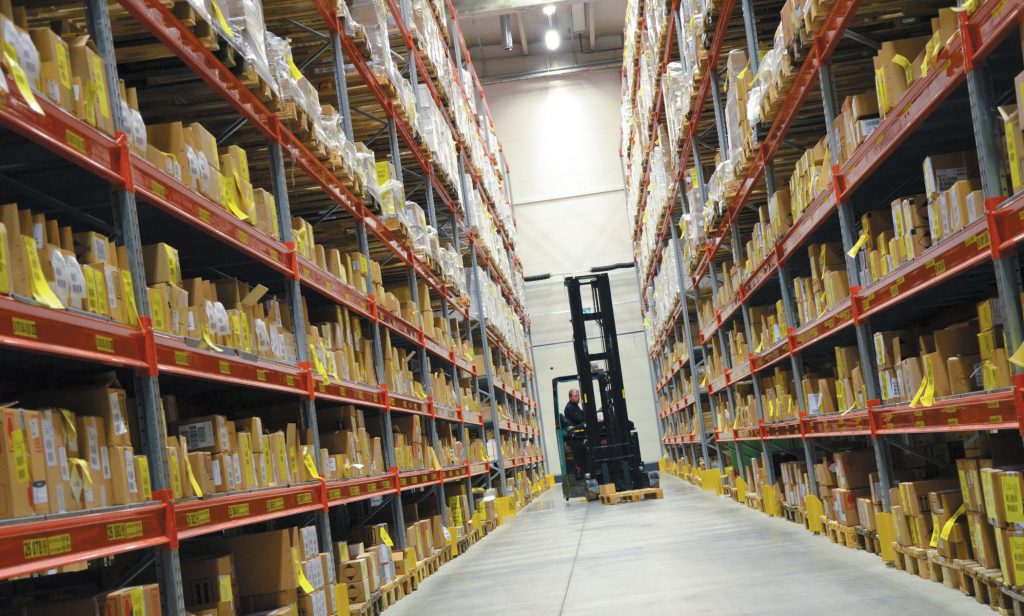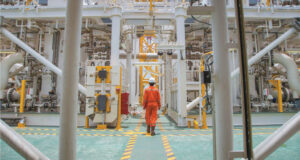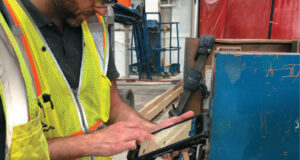DEL WILLIAMS
Whether new or retrofit construction, monitoring hazardous gases in industrial plants that process pulp and paper, as well as at loading docks and receiving areas, is often crucial to safety, compliance, and productivity. Exposure to potentially toxic gases can come from a wide variety of sources, particularly in partially or totally enclosed areas.
According to an OSHA Factsheet, carbon monoxide (CO) is a common industrial hazard resulting from the incomplete burning of material containing carbon such as natural gas, gasoline, oil, propane, or coal. “Carbon monoxide is harmful when breathed because it displaces oxygen in the blood and deprives the heart, brain, and other vital organs of oxygen. Large amounts of CO can overcome you in minutes without warning—causing you to lose consciousness and suffocate,” states the OSHA Factsheet.
“You may be exposed to harmful levels of CO in boiler rooms, warehouses, petroleum refineries, pulp and paper production, and steel production; around docks, blast furnaces, or coke ovens,” as well as in occupations such as forklift operator, diesel engine operator, and welder, adds the factsheet.

Similarly, industrial workers in pulp and paper processing facilities can also be exposed to nitrogen dioxide (NO2) from the burning of fuel for vehicles, equipment, and power generation, which can cause respiratory irritation and aggravate respiratory diseases. Within pulp and paper related warehousing and around loading docks/receiving areas, propane-burning forklifts and equipment can result in a build-up of carbon dioxide (CO2) with complete combustion, or result in excess CO with incomplete combustion. Breathing too much CO2 can cause headaches, dizziness, difficulty breathing, elevated blood pressure, and even coma, asphyxia, and convulsions.
While loading docks and shipping/receiving areas are only partially enclosed when warehouse bay doors are opened, the prevalence of diesel trucks can make monitoring toxic gases essential. Even with ventilation systems installed, the systems can be insufficient, become overwhelmed, or break down and fail. Any areas at risk in pulp and paper process related industrial plants and warehousing should be continually assessed to avoid the inadvertent accumulation of dangerous gases.
MONITOR GASES, MINIMIZE RISK
To enhance safety, comply with regulations, and minimize the risk of dangerous gases that can be inhaled or even flammable or explosive, gas monitoring systems can be set to detect for specific thresholds. After detection, such systems will typically alarm to warn workers in the vicinity and can also text or email supervisory personnel or managers to trigger an immediate response. A record is often kept to document compliance.
The challenge is that pulp and paper industrial processes and capacities can change over time. Design specifications written at the start of a project can evolve, and so can the requirements. Also, local jurisdictions and code officials may have different demands that must be accommodated.
Consequently, working with a vendor with expertise in pulp and paper gas monitoring systems and using advanced, flexible modular systems can significantly speed project completion while facilitating design changes. So can new and more reliable wireless detection systems that promise to speed installation and reduce wiring costs when retrofitting or expanding detection in existing structures.
“On almost every project, design changes occur, so we choose to work with expert vendors that help us quickly adapt,” says Adam Hitchen, president of Atlantis Comfort Systems, a Rhode Island-based HVAC contractor that provides commercial and residential service across the East Coast. Hitchen reports that, in one project in Boston, there were changes in the design of a loading dock area that required accommodation.
“They erected a wall, which required an extra ventilation system, a makeup air system, an independent CO/CO2 detection system, and a change in the existing panel planned for the job,” says Hitchen. On the project, Atlantis Comfort Systems relied on a vendor that provided engineering expertise.
“Our vendor, Acme, helped us change midstream seamlessly. Acme provided the new system and the new panel, and adjusted the existing panel,” says Hitchen. He notes that the wiring diagram, engineering drawing, and necessary sequence of operations was also provided.
Acme Engineering is an ISO 9001:2015 certified manufacturer of environmental controls and systems with integrated mechanical, electrical, and electronic capabilities. The company has expertise providing equipment for monitoring a variety of gases such as carbon monoxide, nitrogen dioxide, carbon dioxide, hydrogen, ammonia, and refrigerants.
When designing a pulp and paper mill gas detection network, Acme first receives a facility floor plan. Next, the company creates performance-based specifications, identifies the optimal sensor locations, elaborates the most energy efficient activation sequence for the ventilation system, and prepares a job-specific wiring diagram, usually within a day or two.
According to Hitchen, when design changes occur the gas monitoring company reacts quickly. “They start with the intent of the design engineer and, when project requirements change, they rapidly revise it and provide what is needed. This helps with code compliance,” he says.
EXPEDITING CONSTRUCTION PROJECTS
For John Rainone, previously a senior project manager with Automated Logic, a Carrier company, the main benefit of working with a vendor with gas monitoring expertise was expediting complex projects. The vendor provided certified engineering drawings up front and as needed.
“No one waited for us on a multi-million-dollar project, which was key because it carried a significant per day late penalty. Altogether, the design expertise probably saved us between two to four weeks,” says Rainone.
The Multi-Gas Monitoring System (MGMS) by Acme, installed on the project to prevent excess carbon monoxide and nitrogen dioxide accumulation, is a gas detection network capable of communicating in real time with any smart device. The system uses industry-standard communication protocols like Ethernet and BACnet that allow remote supervision and reporting to building automation systems.
Such a system can also save pulp and paper facilities energy from the intermittent operation of ventilation equipment. Without detectors to check air quality, ventilation would need to run continuously to change the air. Instead, the gas detection system can check the air quality and only run ventilation when it is necessary.
According to the ASHRAE Applications Handbook, this type of advanced, variable, CO-based demand ventilation control strategy can decrease energy costs by more than 60 percent compared to continuously operating ventilation. Additionally, wear and tear and maintenance on the mechanical and electrical equipment is reduced.
NEXT GENERATION WIRELESS
Although wired installations have long been used to install gas monitoring networks in industrial settings, newer advanced wireless systems are ideal solutions for large open spaces like pulp and paper-related warehousing and loading docks, particularly for retrofits or expansions of existing systems. Wireless capability is extremely advantageous from an installation point of view for reducing installation time and costs. Gas detection networks, generally speaking, are installed by licensed electricians and labor costs are fairly high. With wireless gas detection networks, all that is required is mounting the sensors and establishing the connection with the system.
“In terms of installation, a warehouse can have 40-foot high ceilings so it would be costly to run conduit and wires all over for gas monitoring, power, and connectivity. Loading docks tend to be situated at the ends of a facility, so wireless could be a big benefit there, too. By avoiding the cost and complexity of requiring an electrician for such areas, you could probably save about 20 percent on installation costs,” says Rainone.
Acme, for example, has developed a wireless version of its MGMS system that incorporates Wi-Fi capability so it is not necessary to have a control panel as the sole point to receive feedback from the gas detection network. With the wireless MGMS, users can observe current conditions via their computers, tablets, and phones, with real-time alarms in case of emergency.
“When it comes to reducing installation cost and expediting the project, there is going to be a benefit with wireless. Any time you eliminate conduit and wire from one sensor to the next—and you eliminate all that material and labor—there are going to be savings with wireless,” concludes Rainone.
Del Williams is a technical writer based in Torrance, CA. For more information about gas monitoring systems, visit Acme Engineering Prod. Inc. at acmeprod.com or call: 514-718-4868 (US) or 514-984-4603 (Canada.)
 Paper 360
Paper 360

